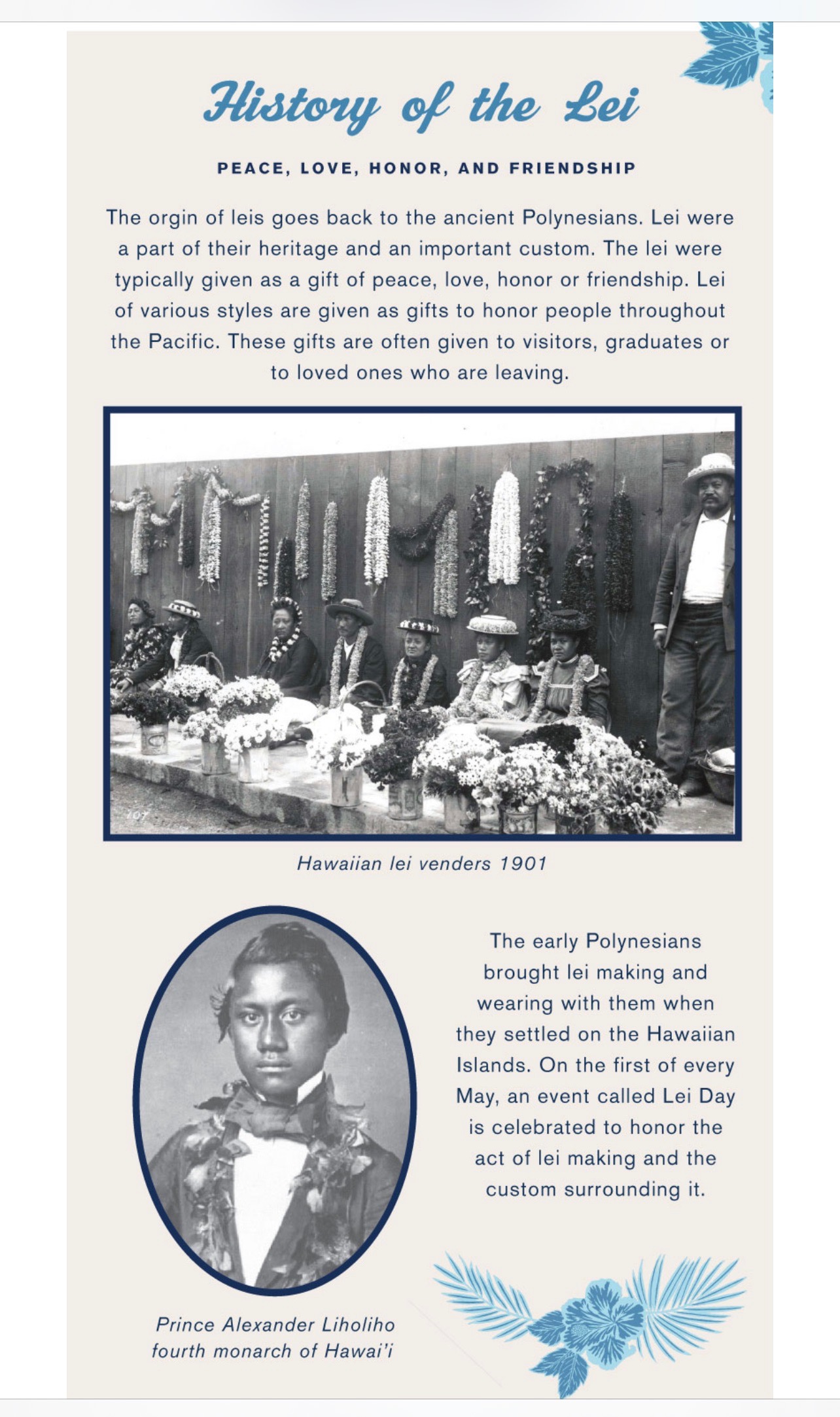It’s said that lei custom was introduced to the Hawaiian Islands by early Polynesian voyagers. Lei were garlands worn about the neck constructed of flowers, leaves, shells, seeds, nuts, feathers, and even bone and teeth of various animals. In Hawaiian tradition, lei were worn by ancient Hawaiians to beautify themselves and distinguish themselves from others.
During the “Boat Days” of the early 1900s, lei vendors lined the pier at Aloha Tower to welcome malihini (visitors) to the islands and kama’aina (locals) back home. It is said that departing visitors would throw their lei into the sea as the ship passed Diamond Head, in the hopes that, like the lei, they too would return to the islands again someday.
Lei is so important to the Hawaiian people that on the first of every May, an event called Lei Day is celebrated to honor the act of lei making and wearing and sharing lei.
Lei can be made in a multitude of ways as well as in a variety of shapes, sizes, colors and meaning. Lei can be worn anytime by anyone on any occasion. To give a lei, it is presented to another by gently placing it around their neck, accompanied by a kiss on the cheek.
To wear a closed lei, it should be worn on the shoulders, half hanging on the front and the other half on the back. An open lei should be centered on the back of the neck with both ends hanging down on the front.
Don’t play with a neck lei by putting it on your head or wrapping it around your wrist as a bracelet. There are specific shorter lei to be worn on the head called haku, or for your wrists or ankles called kupe’e. The haku is often for special occasions such as weddings and graduations while the kupe’e are generally worn by dancers to draw attention to the graceful movements of the hands and feet.
If someone is pregnant, do not offer them a closed lei, as it’s considered bad luck to wear one (it symbolizes the umbilical cord getting wrapped around the baby’s neck).
Do not refuse a lei when offered one or remove your lei in the presence of the person who gave it to you as it is disrespectful. If you are unable to wear the lei for whatever reason including allergies or interference with your work, it is polite to discreetly take it off then hang the lei in a visible place of importance and honor.
A lei should never be thrown away in the trash as it is considered disrespectful. It is customary to return the lei to the earth. You can either remove the flowers from the string and scatter them in the ocean, bury them, or burn them. Or simply hang the lei on a door or window to dry it out to preserve it. Lei can also be hung from trees or left in a place with special meaning such as a statue or sacred site.
A lei should never be thrown away in the trash as it is considered disrespectful. It is customary to return the lei to the earth. You can either remove the flowers from the string and scatter them in the ocean, bury them, or burn them. Or simply hang the lei on a door or window to dry it out to preserve it. Lei can also be hung from trees or left in a place with special meaning such as a statue or sacred site.


 Facebook
Facebook
 X
X
 Pinterest
Pinterest
 Copy Link
Copy Link


